The holiday season approaches, bringing with it that distinct feeling of warmth and anticpation as we prepare to transform our living spaces into festive wonderlands. Christmas decorating isn’t just about following traditions—it’s about creating an environment where memories form and holiday magic feels tangible. This year, homeowners are seeking that perfect balance between timeless holiday elements and fresh approaches that reflect their personal style.
According to a recent Holiday Decorating Survey by the American Home Furnishings Alliance, 78% of respondants believe that thoughtful Christmas decor significantly improves their mood during the winter months, while 64% report that their decorating choices directly influence the quality of their holiday gatherings. With such impact on our emotional wellbeing, it’s worth exploring how to make your home truly shine this season.
From reimagined tree decorating strategies to unexpected applications of lighting, from budget-friendly DIY options to luxury statements, this guide offers comprehensive inspiration for every room, style preference, and practical constraint. Let’s explore how to make this year’s Christmas decorations your most meaningful yet.
I. Traditional Christmas Tree Styling with a Modern Twist
The Christmas tree remains the centerpiece of holiday decorating for good reason—it’s where tradition and personality converge to create a visual focal point that anchors your entire decorating scheme.
Balancing Classic Elements with Contemporary Touches
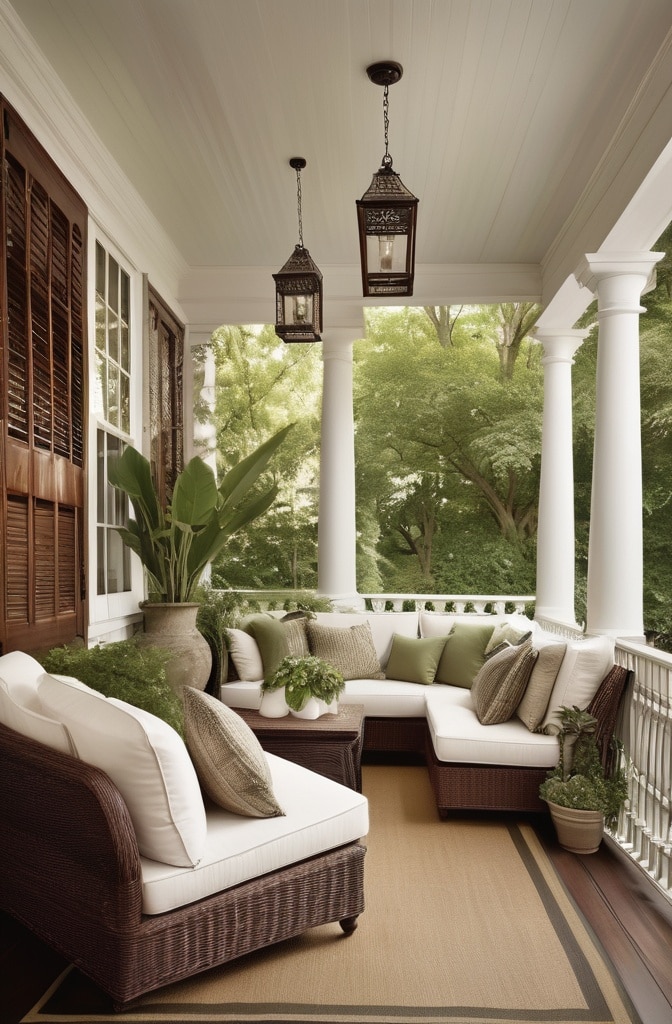
The secret to a tree that feels both familiar and fresh isn’t complicated—it’s about thoughtful curation. Interior designer Maya Henderson explains, “Start with your meaningful heirloom ornaments as a base layer, then introduce contemporary elements that compliment your existing decor style rather than competing with it.”
This means you can keep grandma’s vintage glass ornaments while adding geometric metallic pieces that reflect your modern aesthetic. The tree becomes a conversation between past and present.
Color Psychology: Why Red, Gold and Green Evoke Nostalgic Comfort

These traditional colors aren’t arbitrary—there’s actual psycological impact behind them. Red stimulates warmth and energy, gold symbolizes celebration and achievement, while green represents continuity and life during the darkest days of winter.
Dr. Sarah Nguyen, color psychologist at Northeastern University, notes that “These color combinations trigger childhood memories for most adults, creating an immediate sense of comfort through visual recognition.” Even when used in small doses, these colors can anchor other more contemporary palettes.
Trending Ornament Arrangements: The 60-30-10 Decorating Principle
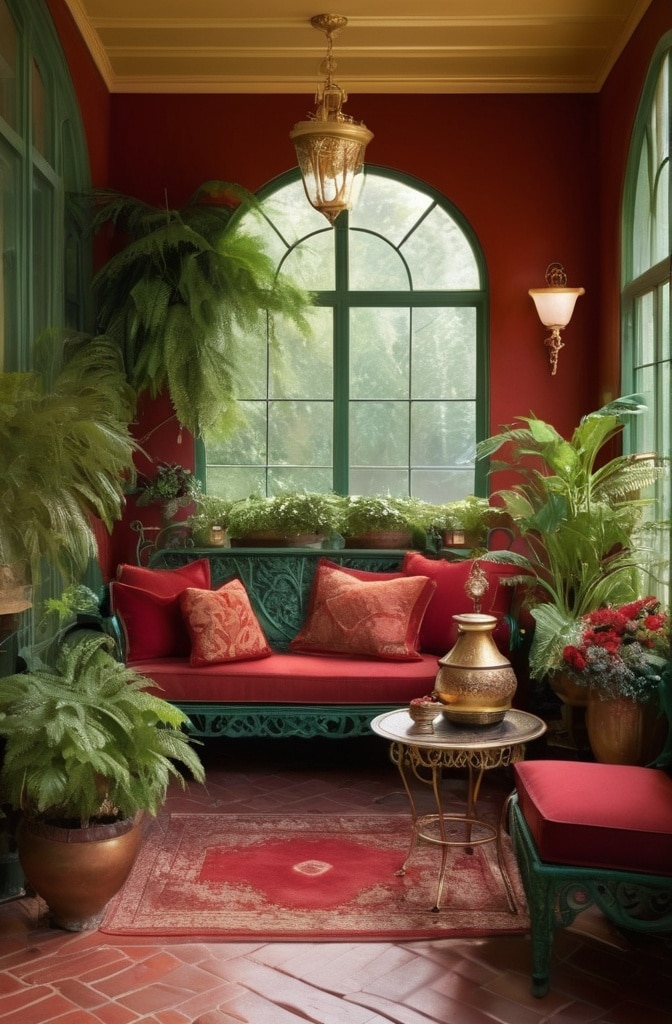
Professional decorators often use the 60-30-10 rule—a principle borrowed from interior design—for tree decorating:
- 60% dominant color (like gold or clear glass ornaments)
- 30% secondary color (perhaps a forest green or deep red)
- 10% accent color or specialty ornaments (maybe metallic copper or unique statement pieces)
This approach creates visual cohesion while still allowing personality to shine through. The technique works regardless of your chosen color scheme, creating depth and interest without appearing chaotic.
Tree Skirt Alternatives Gaining Popularity This Season

While traditional fabric tree skirts remain classic options, alternatives are seeing increased adoption:
- Tree collars made from galvanized metal, rattan, or woven seagrass
- Decorative crates or boxes that add storage potential
- Blanket-wrapped tree bases for cozy, hygge-inspired settings
- Potted trees (especially for smaller spaces) with decorative containers
These alternatives offer practical benefits—many reduce the risk of pets disturbing the tree and provide more stability than traditional skirts.
II. Beyond the Tree: Transforming Key Home Spaces
Although the tree commands attention, truly memorable holiday homes address multiple spaces with intention and creativity.
Living Room Focal Points: Creating Conversation-Friendly Holiday Arrangements
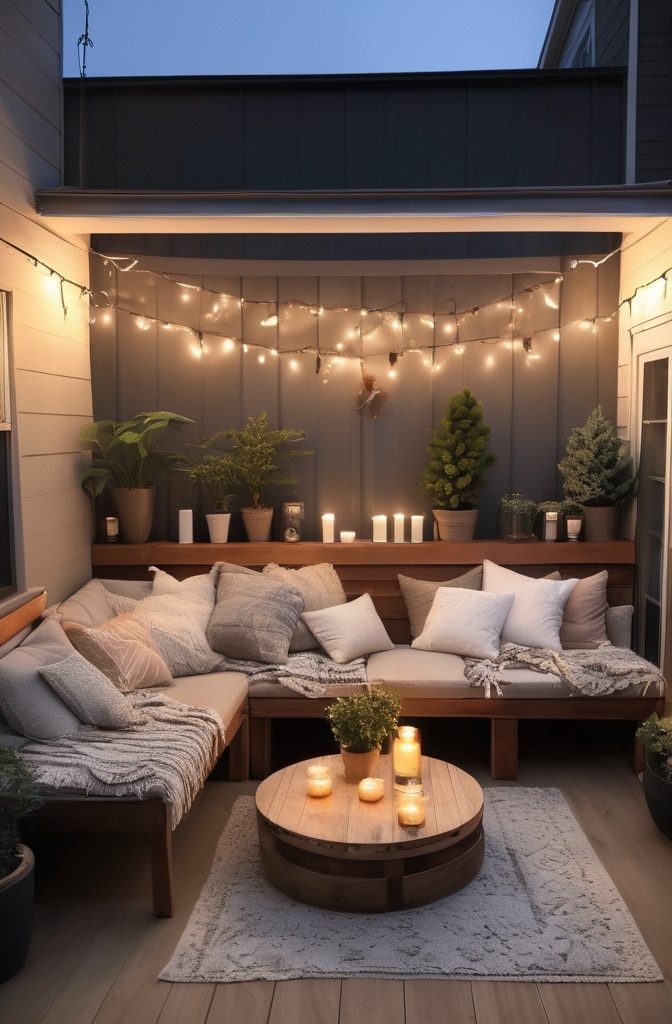
The living room serves as holiday central for most homes, but over-decorating can actually inhibit comfortable gatherings. Design consultant Jeffrey Williams suggests, “Create decorative vignettes that encourage gathering rather than distancing. A coffee table with candles and greenery at a lower height maintains visibility across the room, promoting conversation.”
Consider these living room strategies:
- Mantel styling with varied heights and negative space
- Coffee table arrangements that can be easily moved for games
- Window treatments with subtle lighting elements
- Wall decor that complements rather than competes with the tree
Dining Table Centerpieces That Won’t Interfere with Family Gatherings
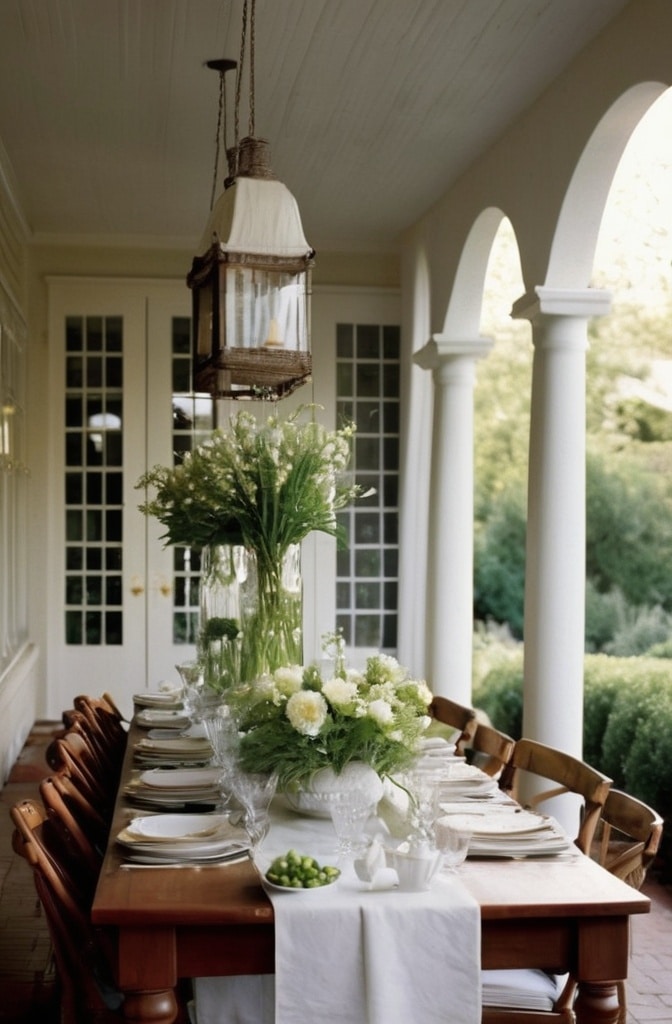
Nothing ruins a holiday meal faster than decorations that block eye contact or require constant moving. The best centerpieces add atmosphere without obstruction.
Chef and entertaining expert Maria Gonzalez recommends, “Create low-profile arrangements using greens, pinecones, and scattered votives. These elements can easily part to make room for serving dishes while maintaining the festive feeling.”
For maximum flexibility:
- Choose centerpieces under 12 inches in height
- Consider runner-style arrangements instead of central pieces
- Use elements that can be easily repositioned during the meal
- Incorporate practical items like napkin rings and place cards into the decorative scheme
Bedroom Transformations: Subtle Touches for Holiday Dreams
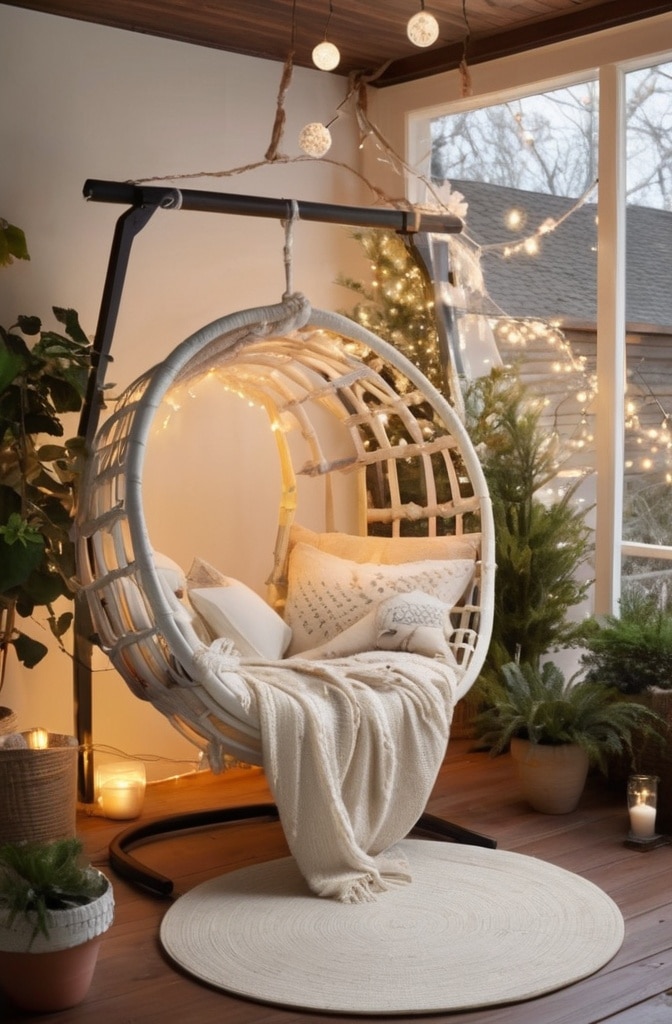
Bedrooms often get overlooked in holiday decorating, yet they offer private spaces to enjoy seasonal magic. Designer Eliza Chen notes that “The bedroom should feel like a holiday retreat—not overwhelming but definitely intentional.”
Effective bedroom holiday elements include:
- Textiles like throw pillows and blankets in seasonal colors or patterns
- String lights with warm white bulbs draped over headboards or mirrors
- Small tabletop trees with minimal, monochromatic ornaments
- Scented elements like cinnamon or pine that promote relaxing sleep
Entryway Magic: First Impressions That Set the Festive Tone
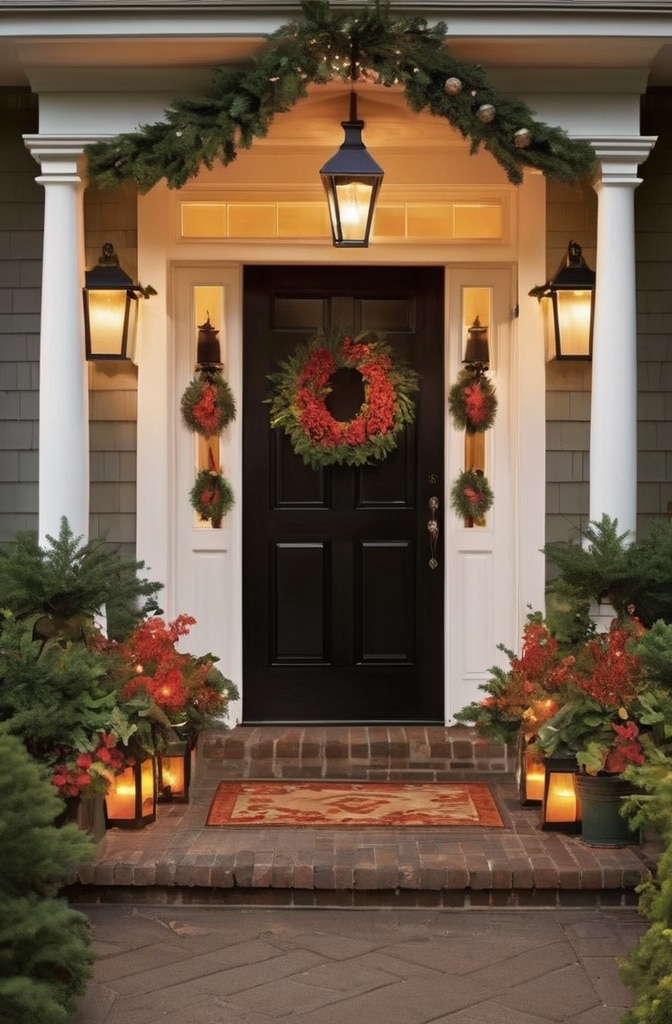
The entryway communicates your holiday style before guests even cross the threshold. This transitional space deserves special attention.
“Your entryway should offer a preview of the decorative experience to come,” says home stager Tara Singh. “It’s also the perfect place to incorporate elements that might not work elsewhere, like larger scale statement pieces or weather-resistant decor.”
Effective entryway elements include:
- Dramatic wreath or door hanging with personal touches
- Lanterns with flameless candles for safety and ambiance
- Boot trays transformed with ornaments or greenery
- Thematic umbrella stands or coat hooks that blend function with festivity
Forgotten Spaces: Transforming Bathrooms and Hallways with Minimal Effort
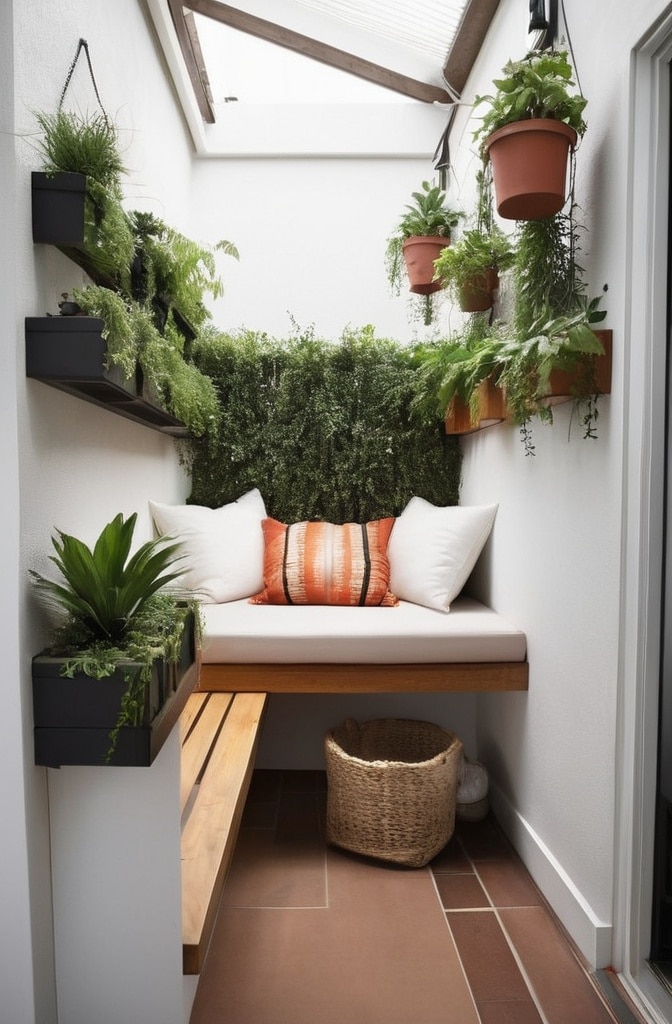
The most thoughtful hosts remember that even utilitarian spaces deserve holiday consideration. Guest bathrooms and hallways provide unexpected opportunities for delight.
Simple additions make major impact:
- Hand towels in seasonal patterns
- Small vases of greenery or berries on vanities
- Replaced shower curtains with subtle holiday motifs
- Gallery wall spaces updated with framed vintage holiday cards or children’s seasonal artwork
III. Material Magic: Texture Combinations that Create Atmosphere
The materials you choose impact not just the visual appeal but the physical feeling of your space during the holidays.
Natural Elements: Integrating Pine, Eucalyptus and Seasonal Greenery
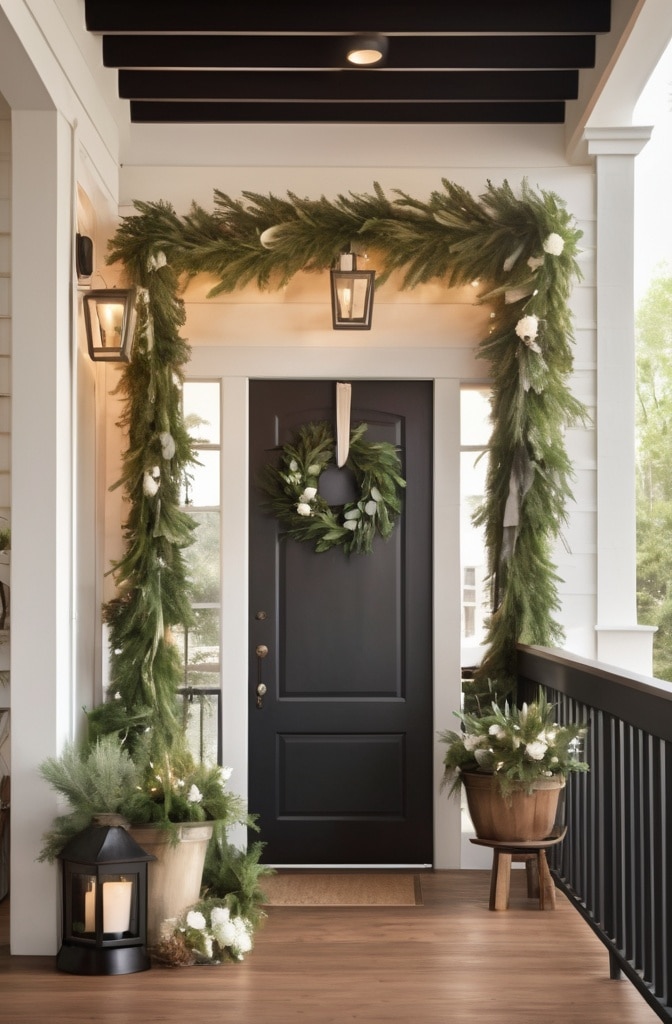
Live or high-quality faux greenery connects us to nature during indoor-heavy months. Landscape designer Thomas Moore explains, “Bringing the outdoors in satisfies a primal need during winter. The scent and texture of real greenery triggers positive associations on a subconscious level.”
Beyond traditional pine and fir:
- Eucalyptus offers silvery color and subtle fragrance
- Magnolia leaves provide glossy texture and longevity
- Olive branches symbolize peace with unique gray-green coloring
- Cedar offers rustic texture and distinctive aroma
These can be sourced from your yard, farmers markets, or florists who often sell greenery bundles during the holiday season.
Textile Layering: How Mixing Fabrics Creates Sensory Richness
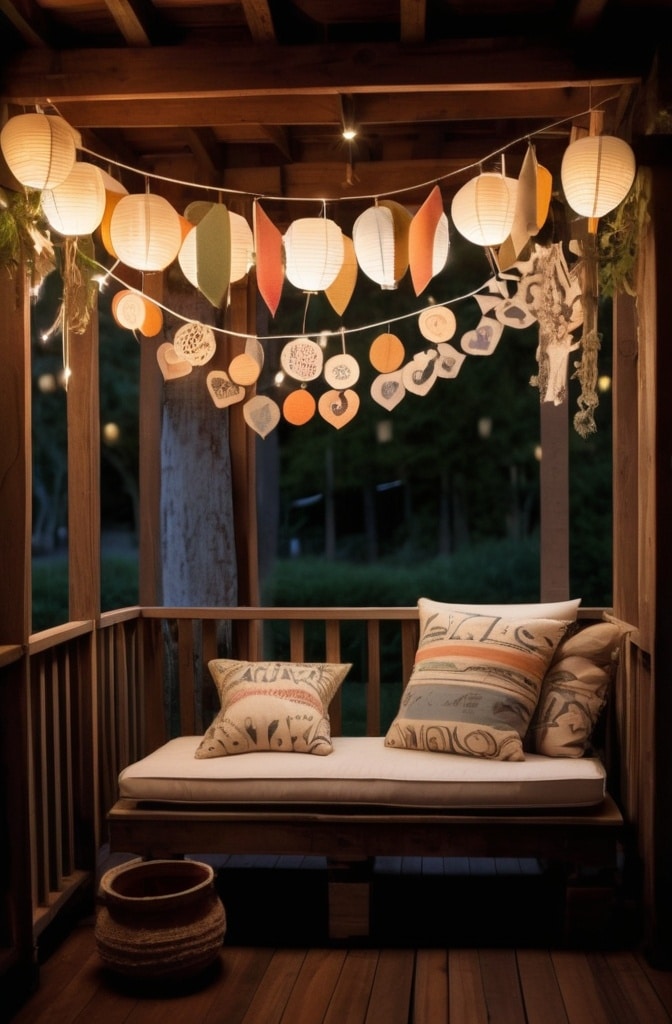
Textiles transform spaces through both visual and tactile experiences. Textile designer Priya Agarwal suggests, “Winter holidays benefit from contrasting textures—smooth velvet against rough jute, or crisp linen with fuzzy wool. These justapositions create depth that flat decorations simply can’t achieve.”
Effective textile pairings include:
- Velvet tree skirts with burlap-wrapped gifts
- Silk ribbons against matte ornament finishes
- Knitted stockings hanging from polished metal hooks
- Linen table runners topped with beaded placemats
The Comeback of Handmade Materials: Felt, Paper and Wood Accents
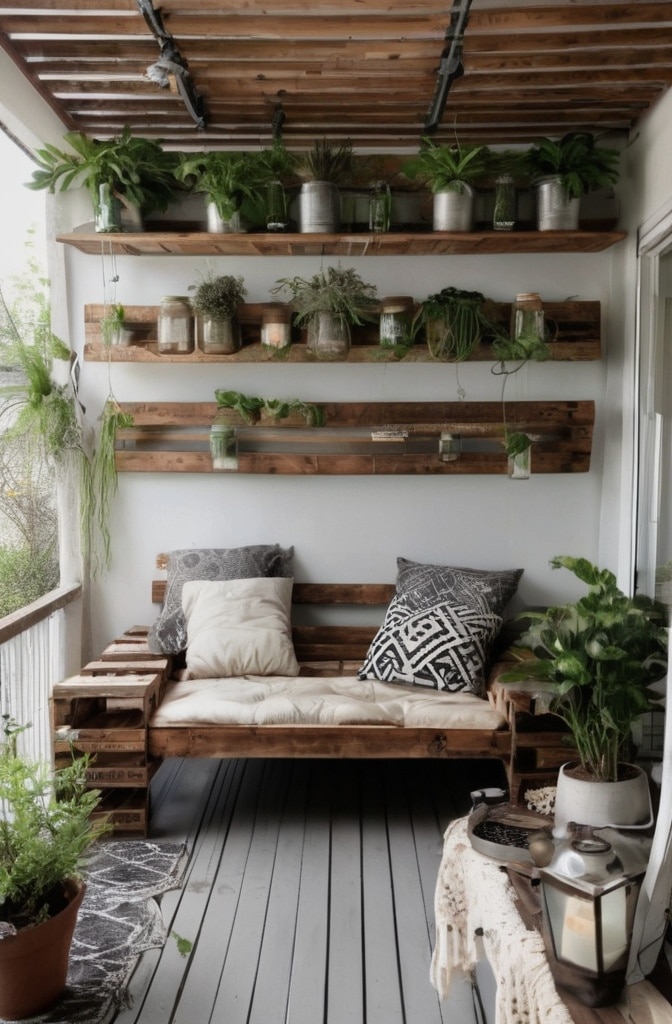
Artisanal and handcrafted elements continue gaining momentum as perfect antidotes to our digital lives. We’re seeing renewed interest in:
- Paper snowflakes and stars (now with modern geometric patterns)
- Wooden ornaments created through traditional methods like chip carving
- Needle-felted figures as collectible decorations
- Hand-dipped beeswax candles with natural fragrance
According to Etsy’s 2024 Holiday Trend Report, searches for handcrafted Christmas decorations increased by 43% compared to previous years, suggesting growing appreciation for the imperfect beauty of handmade items.
Sustainable Decorating: Eco-Friendly Options Gaining Momentum
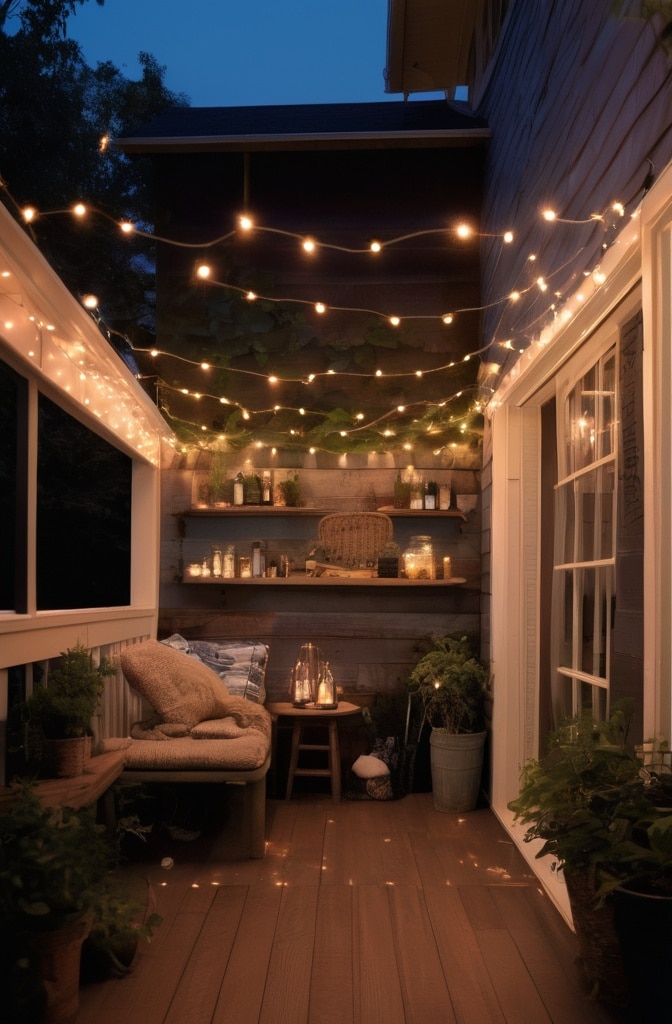
Environmental awareness doesn’t pause for the holidays. Sustainability consultant Olivia Chen reports, “We’re seeing creative applications of recycled, repurposed, and biodegradable materials that create beautiful decorations without environmental guilt.”
Earth-friendly alternatives include:
- Ornaments made from recycled glass
- Biodegradable glitter created from eucalyptus cellulose
- Tree toppers constructed from reclaimed metals
- Ribbon alternatives like twine, yarn, or fabric strips from old clothing
These options often carry stories that add meaning beyond their visual appeal.
IV. Lighting Strategies for Magical Ambience
The right lighting transforms even the simplest decorations into magical displays. This year’s approaches go far beyond basic string lights.
Beyond String Lights: Creative Applications of Fairy Lights in Unexpected Places
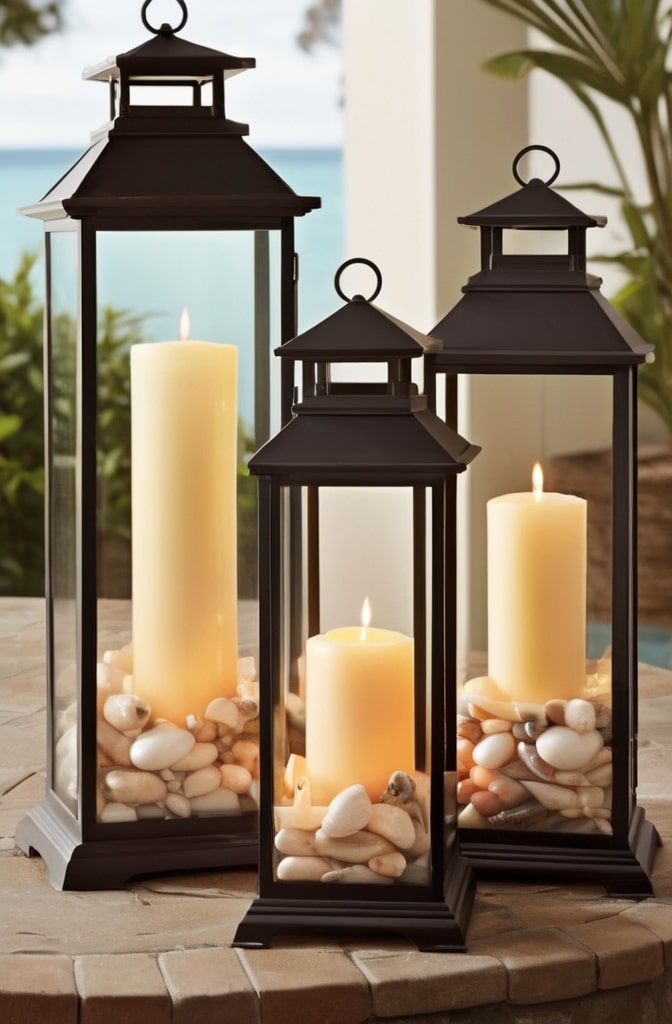
Miniature LED strings with hair-thin wires offer possibilities previous generations couldn’t imagine. Interior photographer Jamie Lewis suggests, “Look for opportunities to add light where it would seem impossable—inside glass containers, woven through plants, or outlining architectural features.”
Unexpected applications include:
- Tucked inside book pages in a partially-open holiday book display
- Woven through garland for multidimensional glow
- Arranged inside clear glass lamps as base illumination
- Trained along ceiling beams to create atmospheric uplighting
The latest micro-LED strings with coin cell batteries eliminate cord management issues in many applications.
Candle Arrangements: Safety Considerations Without Sacrificing Style

Nothing compares to the warm, flickering light of candles, but safety remains paramount. Fire safety expert Michael Torres recommends, “Group flameless candles with a few strategic real candles in areas away from traffic, greenery, or children’s reach. You’ll get the authentic experience with minimized risk.”
Effective candle strategies include:
- Placing real candles inside hurricane glasses or lanterns
- Using floating candles in water-filled vessels for added protection
- Clustering flameless candles in varying heights where real flames would be hazardous
- Reserving scented candles for rooms away from dining areas where they might compete with food aromas
Smart Lighting Integration: Programmed Holiday Moods at the Touch of a Button

Smart home technology has revolutionized holiday lighting. Systems now allow for:
- Scheduled lighting that transitions throughout the evening
- Voice-controlled color changes to match different activities
- Energy-saving automations that manage electricity use
- Synchronized music and light displays at affordable price points
Tech journalist Sophia Wang notes, “Today’s entry-level smart lighting systems start around $35, making this luxury accessible to most households. The convenience of scheduled lighting means your home welcomes you with holiday ambiance without daily effort.”
Shadow Play: Using Light Projection to Create Immersive Experiences
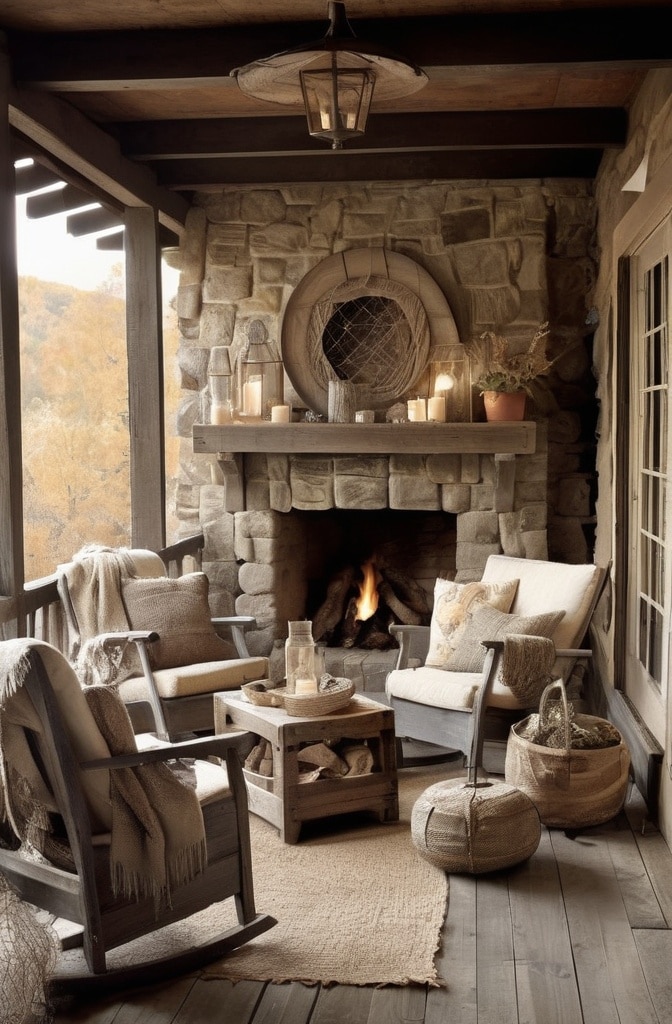
Projection technology has become sophisticated and affordable, offering dramatic impact with minimal physical decorations.
Options range from simple window projections to whole-house mapping:
- Snowfall effects projected onto living room walls
- Holiday patterns cast onto floors or ceilings
- Animated scenes displayed in windows for neighborhood enjoyment
- Color-changing spotlights that transform tree appearances throughout the evening
These technologies use minimal electricity while delivering maximum visual impact.
V. Style Guides for Different Aesthetic Preferences
Holiday decorating should reflect your authentic style rather than conforming to tradition for its own sake.
Rustic Charm: Countryside Warmth with Weathered Finishes

The rustic approach celebrates imperfection and natural patina. Design blogger Connor Mitchell describes it as “decorating that tells a story through visible history—weathered surfaces, natural materials, and honest construction.”
Key elements include:
- Galvanized metal containers filled with greenery
- Wooden ornaments with visible grain and texture
- Buffalo check patterns in traditional red and black
- Repurposed farm implements as unexpected decorative elements
This style pairs beautifully with exposed wood architecture and vintage furniture pieces.
Scandinavian Simplicity: Clean Lines with Thoughtful Details
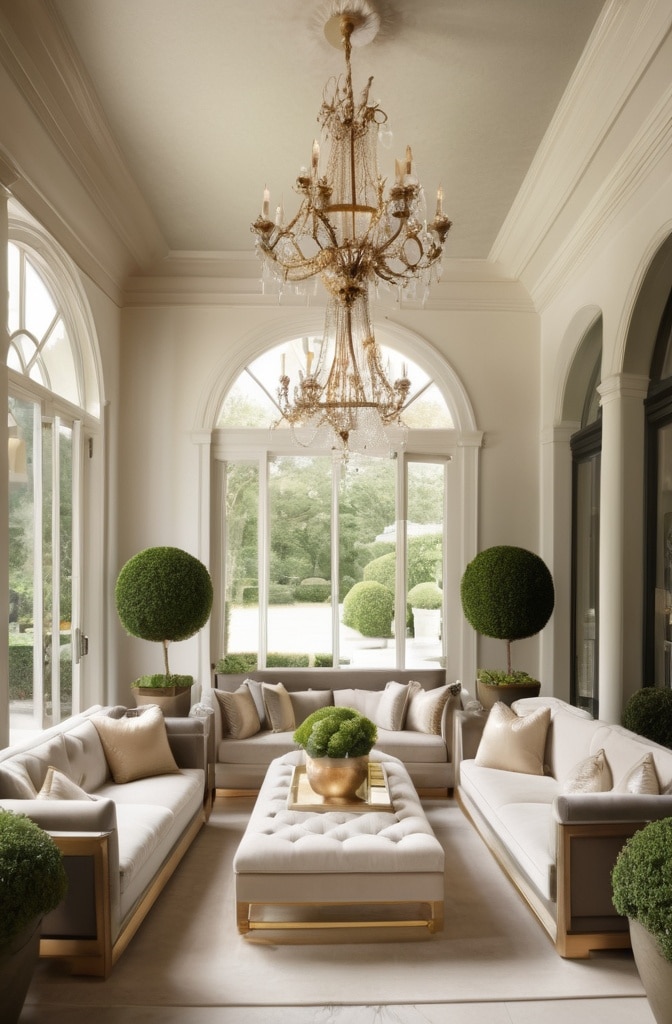
Nordic-inspired holiday decor emphasizes quality over quantity through restrained color palettes and meaningful simplicity.
Hallmarks of this approach include:
- Predominantly white backgrounds with black accents
- Natural wood ornaments and figurines
- Red as the primary accent color, used sparingly
- Straw stars and woven hearts as traditional elements
- Abundant candles creating hygge (cozy comfort)
This style works particularly well in minimalist homes with contemporary architecture.
Luxury Elegance: Subtle Statements with Metallic and Crystal Elements
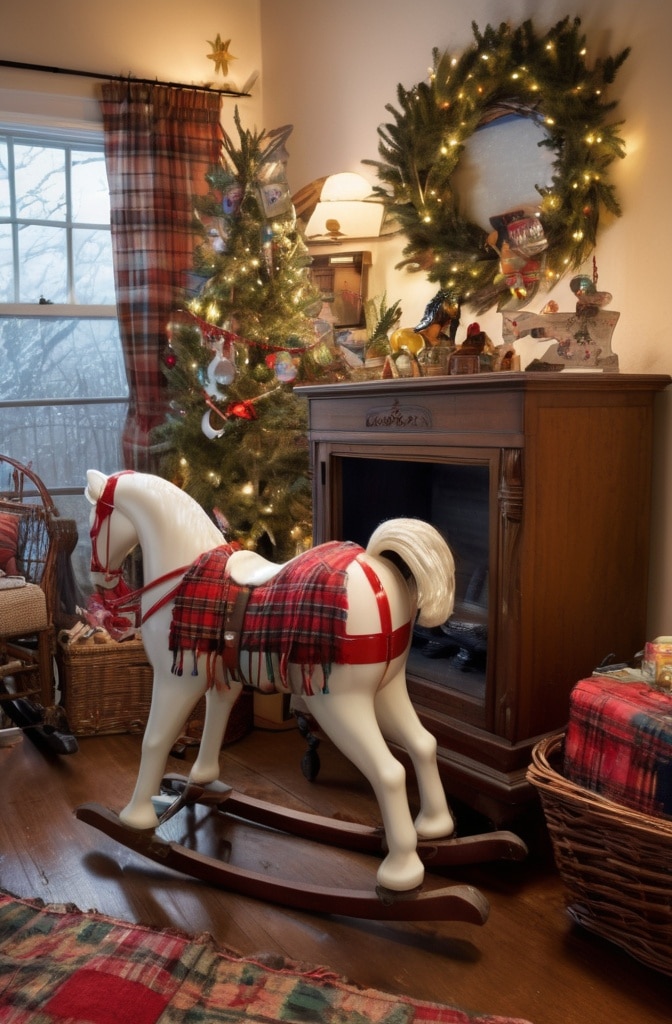
Sophisticated spaces benefit from restrained opulence that emphasizes quality materials and refined finishes.
Key components include:
- Limited color palette (often white, cream, and gold)
- Crystal or glass ornaments that reflect light
- Metallic finishes in warm gold or cool platinum
- Silk ribbons and luxury textiles like velvet and cashmere
- Fresh white flowers such as amaryllis or paperwhites
The effect should feel curated rather than extravagant, with each element carefully considered.
Nostalgic Vintage: Recapturing Childhood Memories Through Decor
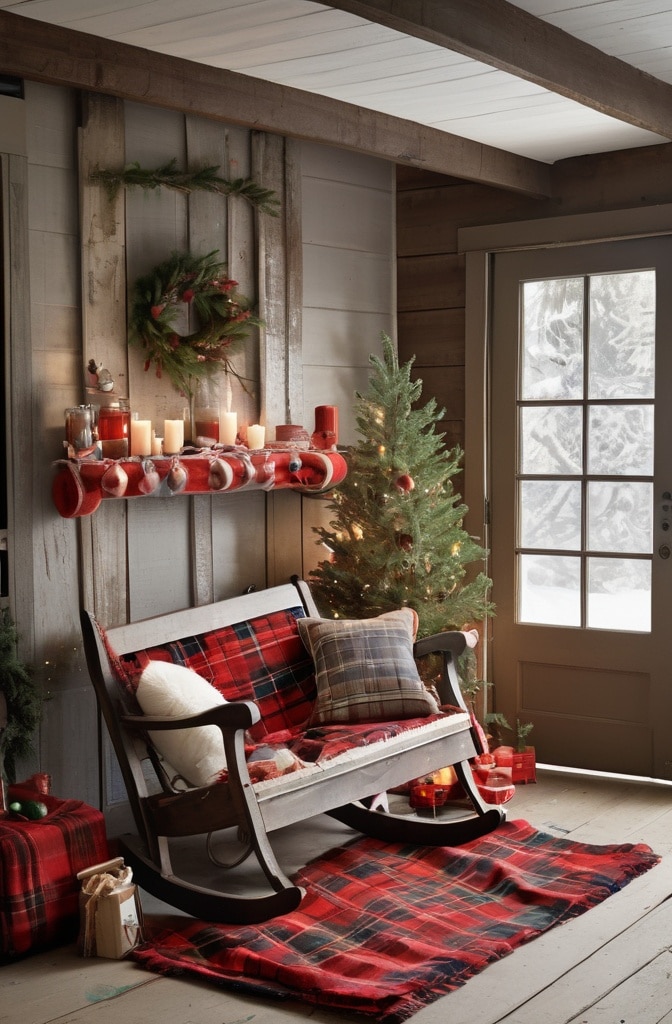
Vintage-inspired decorating connects generations through familiar motifs from mid-century celebrations.
Distinctive features include:
- Reproduction or authentic glass ornaments with indented designs
- Ceramic light-up trees and villages
- Candy-colored palette with turquoise, pink, and lime green
- Bottlebrush trees and figural ornaments
- Space-age inspired stabursts and geometric forms
This approach works beautifully for those with collections of heritage decorations or mid-century modern homes.
Minimalist Magic: Impactful Holiday Statements with Fewer Elements
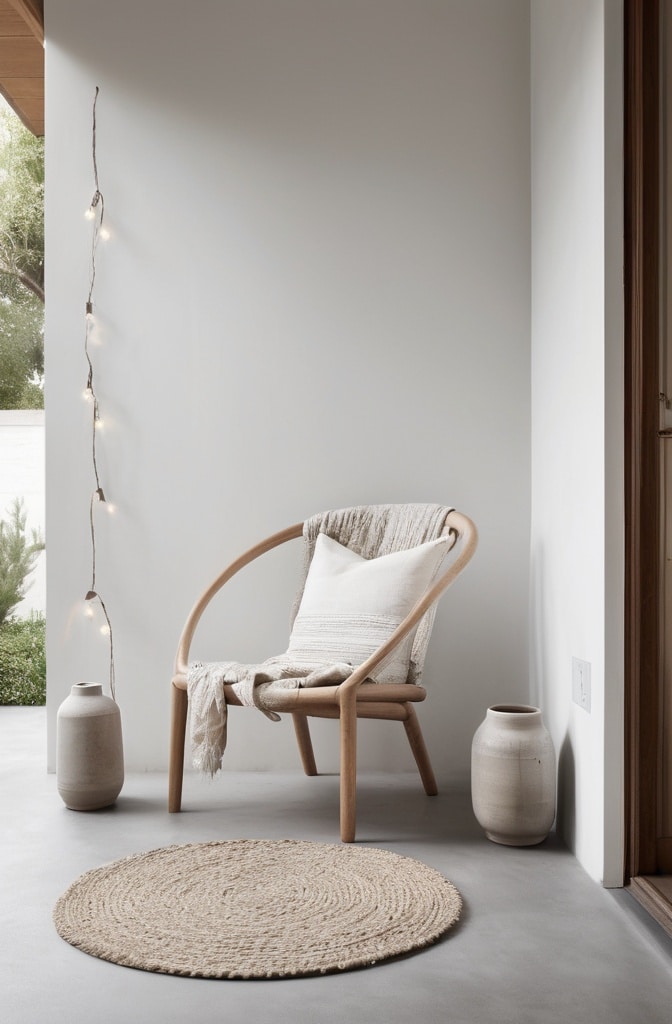
Minimalist decorating isn’t about absence—it’s about intentional curation. Designer Naomi Parker explains, “A single perfect element in the right location creates more impact than dozens of competing decorations. The eye needs negative space to truly appreciate beauty.”
Characteristics include:
- Monochromatic or two-color schemes
- Emphasis on form over embellishment
- Natural materials presented simply (a single branch, a bowl of pinecones)
- Strategic lighting that highlights architectural features
- Careful consideration of negative space
This style suits contemporary homes and those who prefer calm, uncluttered environments.
VI. DIY Projects for Personalized Christmas Decor
Creating decorations by hand adds meaning that purchased items rarely match, regardless of price point.
Handcrafted Ornaments That Become Family Heirlooms
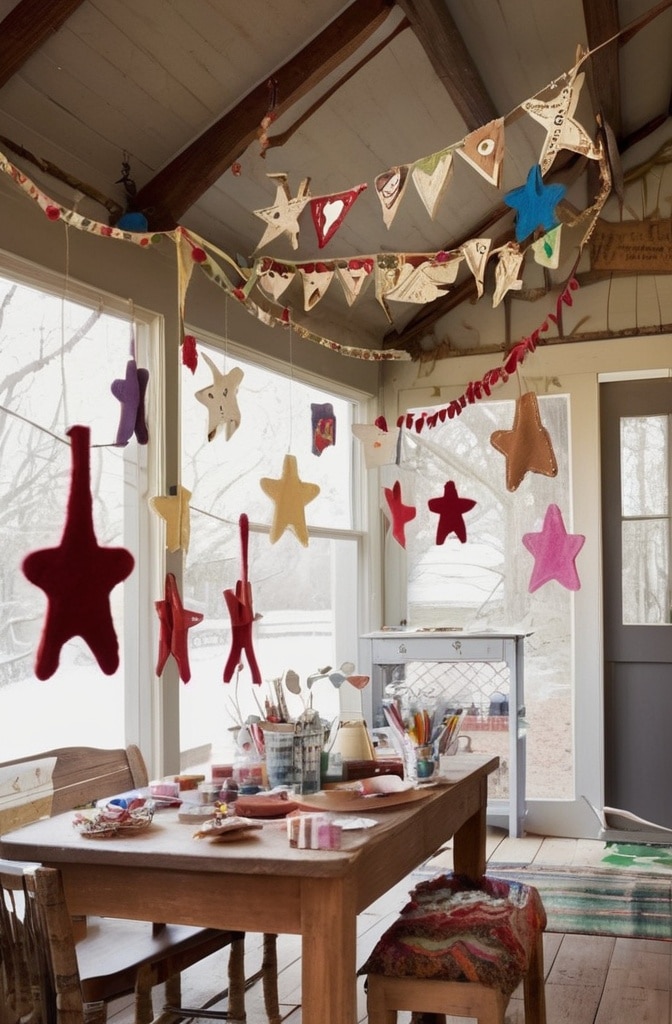
Some of the most treasured decorations carry stories of their creation. Craft expert Lin Rodriguez suggests, “Start with a simple technique you enjoy—perhaps working with clay, paper, or fabric—and create a few ornaments each year. Date them, and you’ll build a collection that documents your family’s creative journey.”
Accessible techniques include:
- Salt dough impressions of children’s hands or special objects
- Preserved natural elements sealed in resin
- Fabric ornaments using clothing from significant events
- Hand-painted wooden discs showing yearly milestones
These become treasured keepsakes that gain value through the years.
Custom Garland Recipes with Foraged and Pantry Ingredients
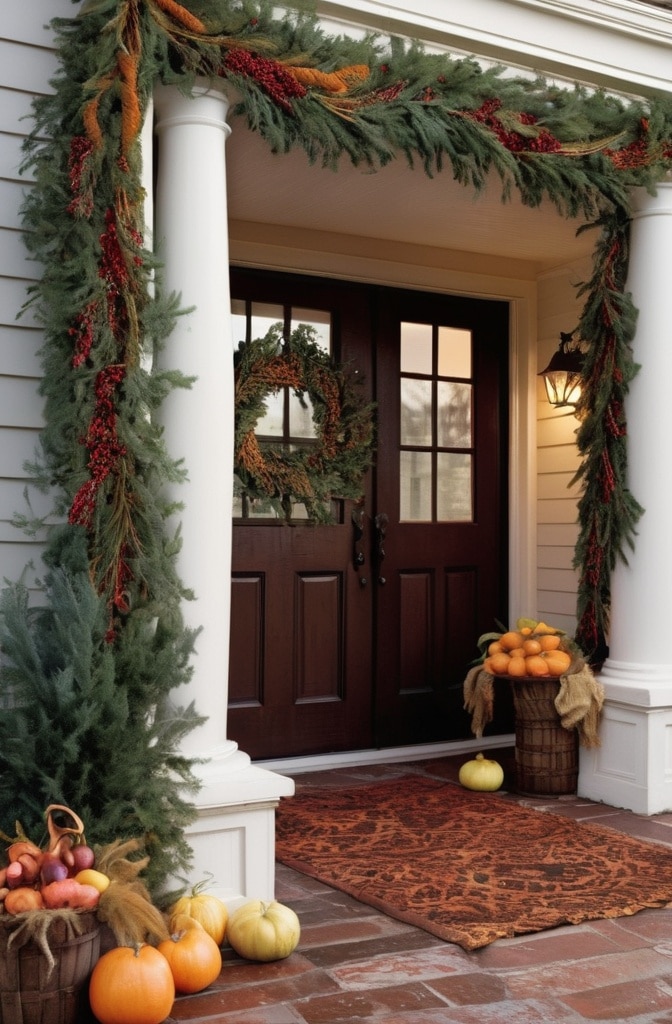
Garlands offer high visual impact with relatively simple construction. Florist Taylor Johnson recommends, “Start with a base of artificial greenery for structure, then enhance with natural elements you harvest yourself. This creates sustainable, unique decorations connected to your local environment.”
Popular garland additions include:
- Dried orange slices (oven-dried at 200°F for 4-6 hours)
- Cinnamon sticks bundled with floral wire
- Bay leaves or eucalyptus for silvery contrast
- Wooden beads for texture and pattern
- Foraged pinecones, seedpods, or berries
These elements can be changed throughout the season as some materials fade.
Upcycled Decor: Transforming Everyday Items into Holiday Treasures
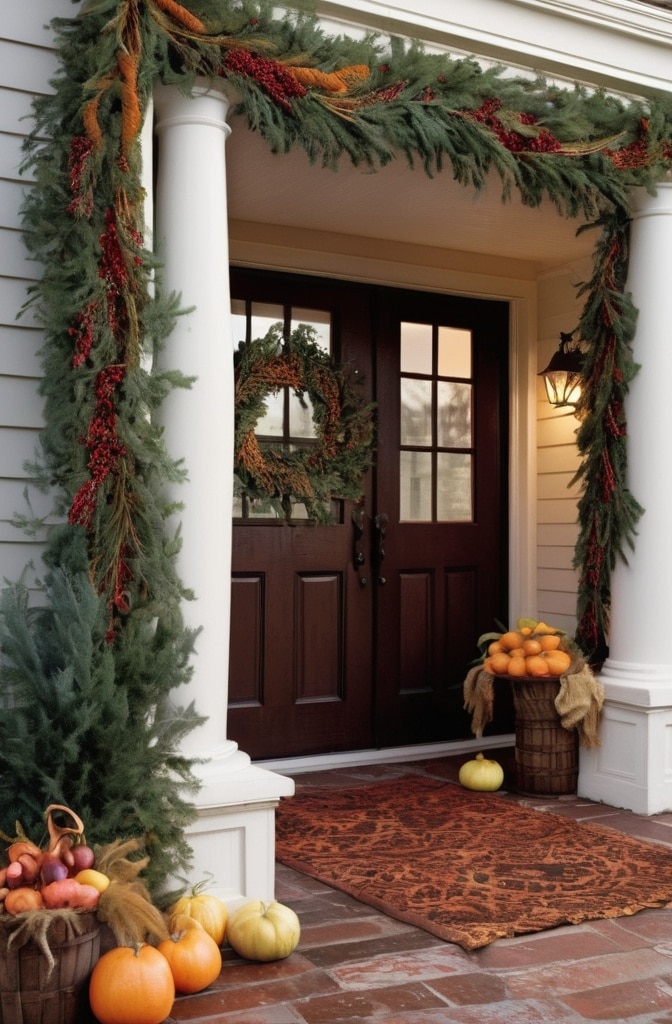
Repurposing common objects reduces waste while creating distinctive decorations. Environmental artist Diego Ramirez notes, “Look at ordinary objects through a lens of possibility—almost anything can be transformed with paint, glitter, or strategic arrangement.”
Creative transformations include:
- Mason jars becoming luminaries with battery candles
- Wine corks forming miniature trees or wreaths
- Old sweaters reimagined as stockings or pillow covers
- Sheet music or book pages folded into ornaments or stars
- Cardboard shipping tubes becoming advent calendars
These projects offer satisfaction beyond their decorative value by giving new purpose to items that might otherwise be discarded.
Family Craft Sessions: Age-Appropriate Projects for Creating Memories
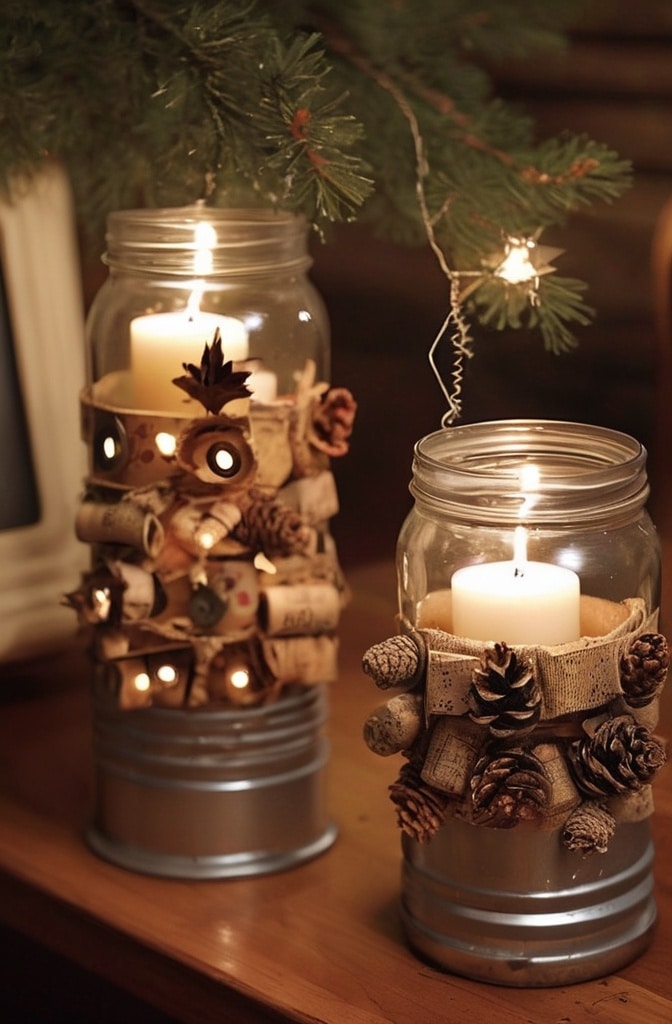
Crafting together builds traditions that transcend the finished products. Child development specialist Dr. Maya Patel explains, “The conversation and collaboration during creative sessions form stronger memories than the decorations themselves. These become cherished traditions children carry into adulthood.”
Projects suitable for mixed ages include:
- Paper chain garlands (younger children can tear tape while older ones measure and cut)
- Decorated pinecones (toddlers can apply glue while adults handle glitter)
- Cookie decorating that doubles as decor on tree-shaped displays
- Family handprint wreaths that grow more precious over time
Schedule these activities early in the season to enjoy the results throughout the holidays.
VII. Special Considerations for Unique Situations
Not every home fits the standard decorating template—some require creative adaptation of traditional concepts.
Small Space Solutions: Maximum Impact in Minimal Square Footage
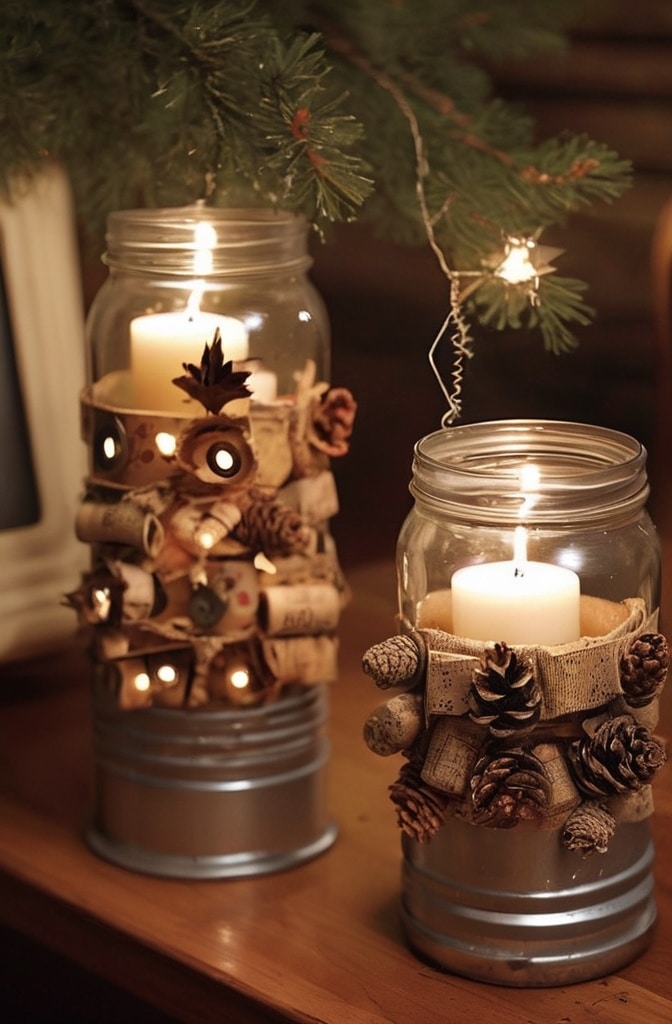
Apartment dwellers and tiny home enthusiasts can embrace the season without overwhelming limited space. Interior designer for small spaces, Nina Chen, suggests, “Think vertically and temporarily. Wall decorations, window treatments, and tabletop elements deliver holiday feeling without sacrificing precious floor space.”
Space-saving strategies include:
- Wall-mounted or hanging trees that eliminate floor footprint
- Door decorations that transform entrances without protruding
- Tiered serving trays repurposed as decorative displays
- Window film or clings creating seasonal atmosphere without permanent installation
Multipurpose decorations that serve functional roles reduce clutter in compact environments.
Pet-Friendly Decorating That Maintains Your Holiday Vision
Animal companions present unique decorating challenges. Veterinarian Dr. James Wilson recommends, “Create deliberate ‘decoration-free zones’ where pets can move freely, while concentrating holiday items in protected areas. This reduces stress for both animals and owners.”
Safety measures include:
- Securing trees to walls or ceilings to prevent tipping
- Elevating breakable ornaments beyond paw reach
- Using pet-safe plants (avoid holly, mistletoe, and certain lilies)
- Creating alternative attractions like pet gift boxes to redirect attention
Many pet owners report success with gradual introduction of decorations rather than sudden environmental changes.
Child-Safe Options That Still Look Sophisticated
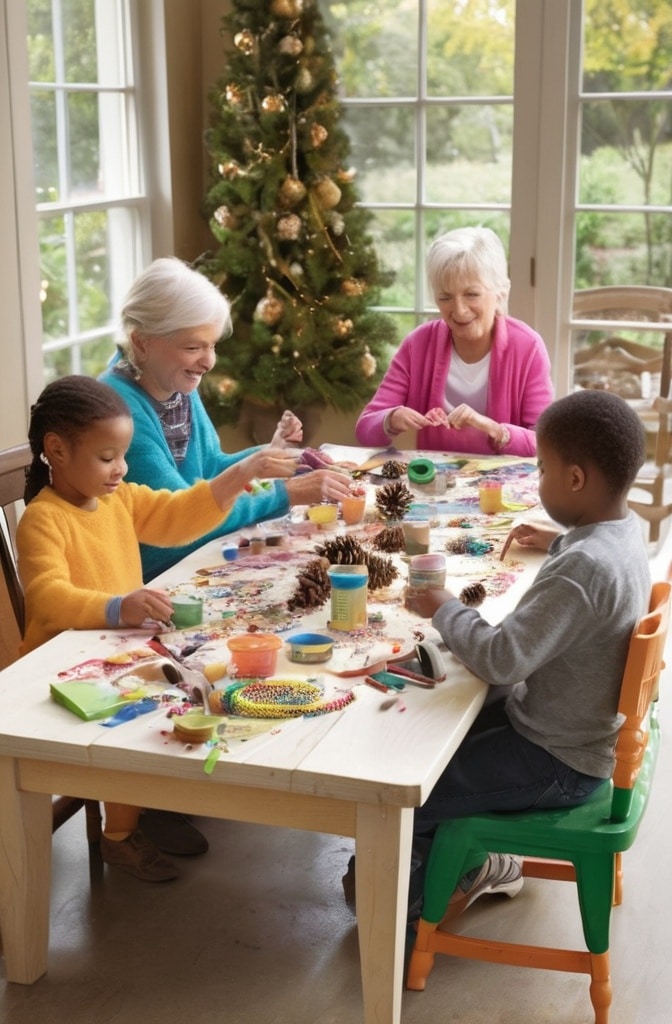
Homes with young children require special consideration without sacrificing style. Child safety expert Emma Bradley notes, “The lower third of your home is essentially the kid zone—design accordingly with unbreakable, non-toxic decorations at this level, saving delicate items for higher placement.”
Family-friendly approaches include:
- Soft fabric ornaments on lower tree branches
- Battery-operated flameless candles instead of open flames
- Felt or fabric garlands replacing those with small parts
- Secured furniture to prevent climbing accidents during decoration viewing
These precautions allow families to maintain sophisticated style while protecting curious explorers.
Rental-Friendly Decor Ideas That Won’t Damage Walls or Surfaces
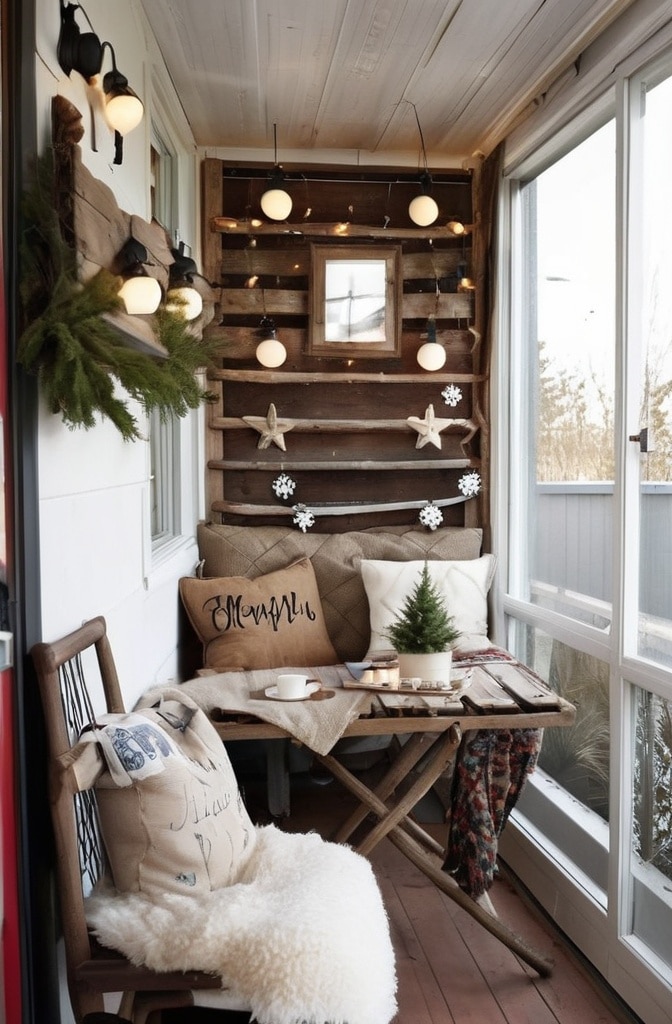
Lease restrictions needn’t limit holiday expression. Rental expert Jordan Taylor suggests, “Command hooks, tension rods, and weighted bases create freedom to decorate without permanent changes. Document pre-decoration condition and review lease terms to avoid misunderstandings.”
Non-damaging techniques include:
- Over-door wreath hangers requiring no installation
- Removable window clings for festive patterns
- Tension curtain rods supporting lightweight garlands
- Furniture-based displays eliminating wall attachments entirely
These approaches deliver visual impact while protecting security deposits.
VIII. Color Scheme Strategies for Cohesive Decor
Intentional color planning creates harmony throughout your holiday environment.
Traditional Palettes Reimagined: Fresh Takes on Red and Green
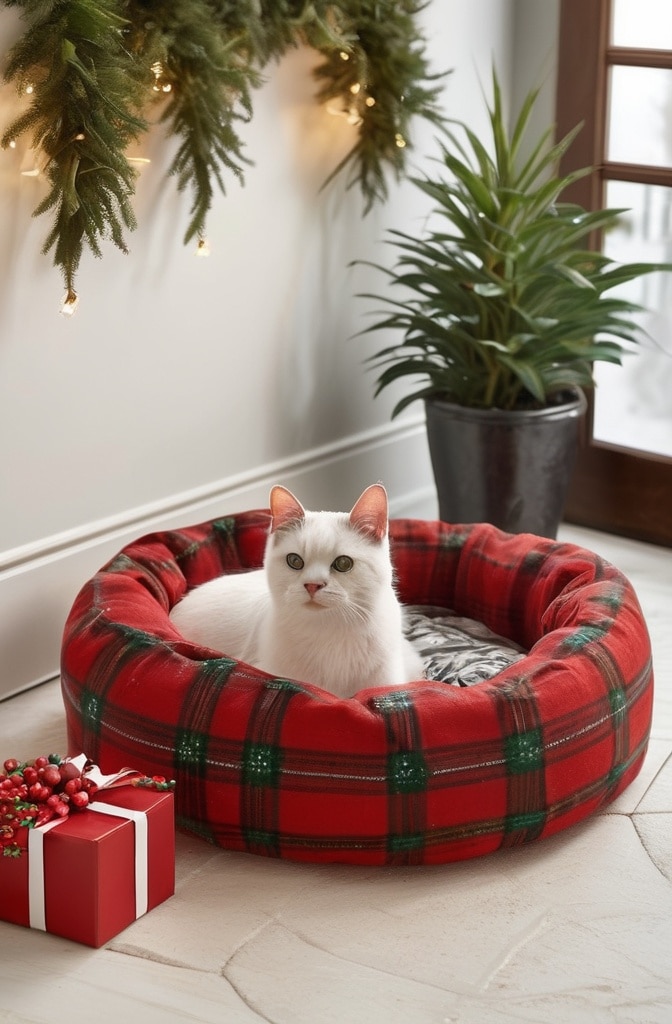
Classic colors gain contemporary relevance through thoughtful application. Color consultant Marcus Lee explains, “Today’s interpretation of traditional colors involves unexpected pairings and varying saturations. Forest green with coral red feels entirely different from mint green with burgundy, yet both honor tradition.”
Modern interpretations include:
- Olive green paired with rust red for organic sophistication
- Emerald green with cherry red for jewel-toned richness
- Sage green with cranberry for subdued elegance
- Pine green with scarlet for high-contrast tradition
These variations maintain recognizable holiday associations while offering fresh visual interest.
Winter Wonderland: Working with Blue, Silver and White Tones
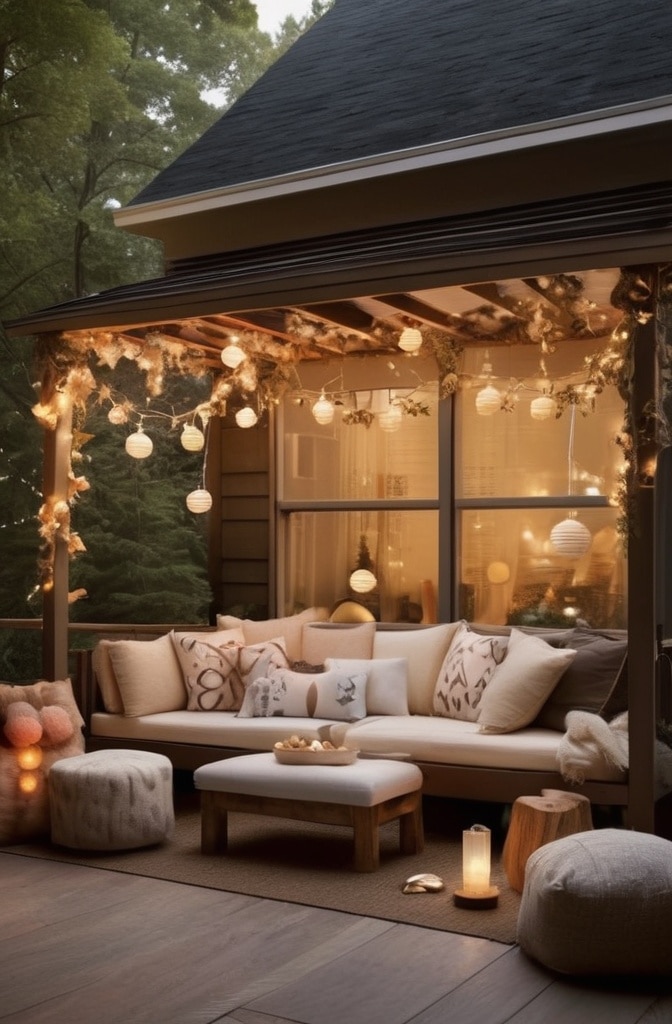
Cool-toned schemes evoke snowy landscapes regardless of actual climate. Designer Rebecca Frost notes, “Blue-based holiday schemes create a sense of tranquility that counterbalances the season’s activity. These palettes work particularly well in homes with existing cool-toned furniture.”
Successful combinations include:
- Navy, silver, and white for sophisticated contrast
- Powder blue, platinum, and cream for subtle elegance
- Teal, antiqued silver, and ivory for unexpected richness
- Ice blue, mirror finishes, and bright white for contemporary crispness
These palettes complement homes with blue, gray, or white architectural elements.
Monochromatic Magic: Single-Color Schemes with Textural Variety

Limiting color while maximizing texture creates sophisticated impact. Design psychologist Dr. Thomas Wong explains, “The human eye registers textural variation as visual interest even within limited color range. This creates spaces that feel both cohesive and complex.”
Effective monochromatic approaches include:
- All-white schemes using paper, fabric, ceramic, and metallic finishes
- Natural schemes featuring undyed wool, wood, jute, and linen
- Metallic schemes combining matte, hammered, polished, and antiqued finishes
- Green schemes incorporating various botanicals from silvery eucalyptus to deep pine
These schemes create particularly stunning photographic backgrounds for holiday memories.
Unexpected Combinations Gaining Traction in Design Circles

Forward-thinking decorators embrace surprising color relationships. Trend forecaster Alicia Montgomery reports, “We’re seeing holiday applications of colors previously considered ‘non-traditional,’ like terracotta with turquoise or plum with mustard. These combinations feel fresh while still carrying festive energy.”
Emerging combinations include:
- Blush pink with olive green for subtle sophistication
- Terracotta with teal for southwestern warmth
- Plum with gold for opulent richness
- Charcoal with copper for industrial elegance
These schemes particularly suit homes with distinctive existing color stories that might clash with traditional holiday palettes.
IX. Budget-Friendly Approaches Without Sacrificing Style
Beautiful holiday environments don’t require significant financial investment—just strategic allocation of resources.
Strategic Splurging: Where to Invest for Maximum Impact

Financial advisor and lifestyle blogger Simone Jackson recommends, “Identify the ‘hero pieces’ that define your holiday style and invest accordingly, balancing with budget-friendly supporting elements. One stunning statement piece creates more impact than dozens of forgettable items.”
Worth-the-investment categories include:
- High-quality artificial tree (lasting 10+ years with proper storage)
- Statement tree topper becoming a family heirloom
- Versatile lighting with multiple application possibilities
- Durable storage solutions preventing damage between seasons
These investments deliver value through longevity and visual impact.
Clever Repurposing of Non-Holiday Items
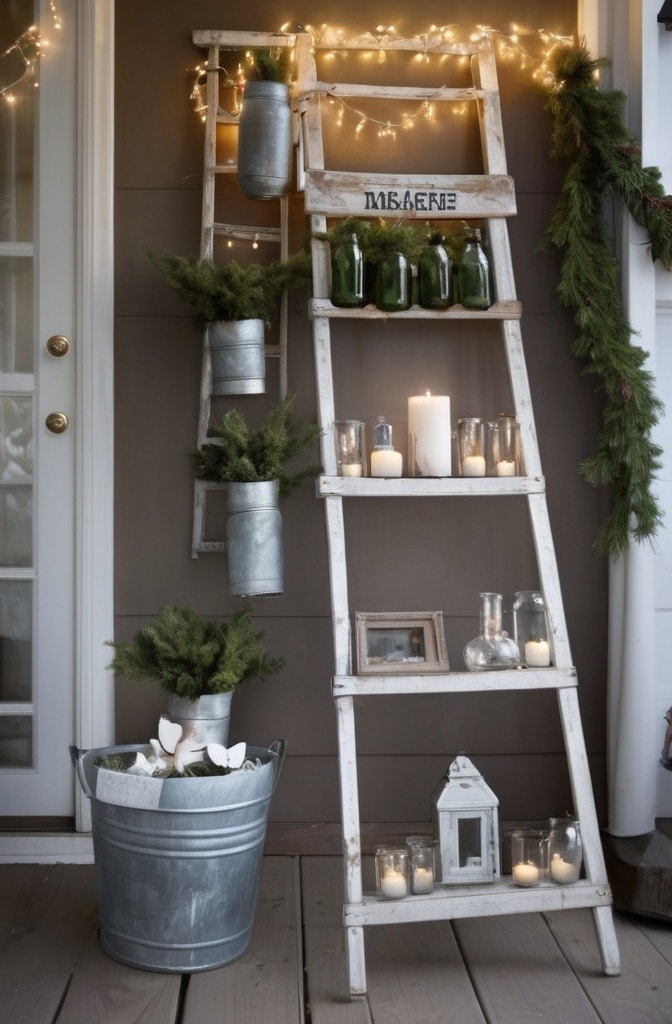
Everyday objects can take on festive personalities with minimal adaptation. Stylist Maria Rodriguez suggests, “Look at your home with fresh eyes—many items already possess holiday potential through placement or minor embellishment.”
Effective repurposing includes:
- White bedsheets becoming tablecloths or tree skirts
- Mason jars transformed into luminaries or ornament displays
- Wooden ladders serving as alternative trees or card displays
- Cake stands elevating miniature holiday scenes
These approaches reduce both cost and storage requirements between seasons.
Progressive Decorating: Building Your Collection Strategically Over Years

Developing holiday decor over time creates meaningful collections without budget strain. Financial counselor David Park advises, “Establish a reasonable annual decoration budget and stick to it. Choose pieces that complement your existing collection rather than requiring complete renewal.”
Sustainable collection-building includes:
- Adding one new specialty ornament annually as a dated record
- Focusing on different rooms in rotation through successive seasons
- Taking advantage of post-holiday clearances for next year’s additions
- Creating a decoration sinking fund with monthly contributions
This approach builds traditions while respecting financial boundaries.
Community Resource Sharing: Decoration Swaps and Group Purchases
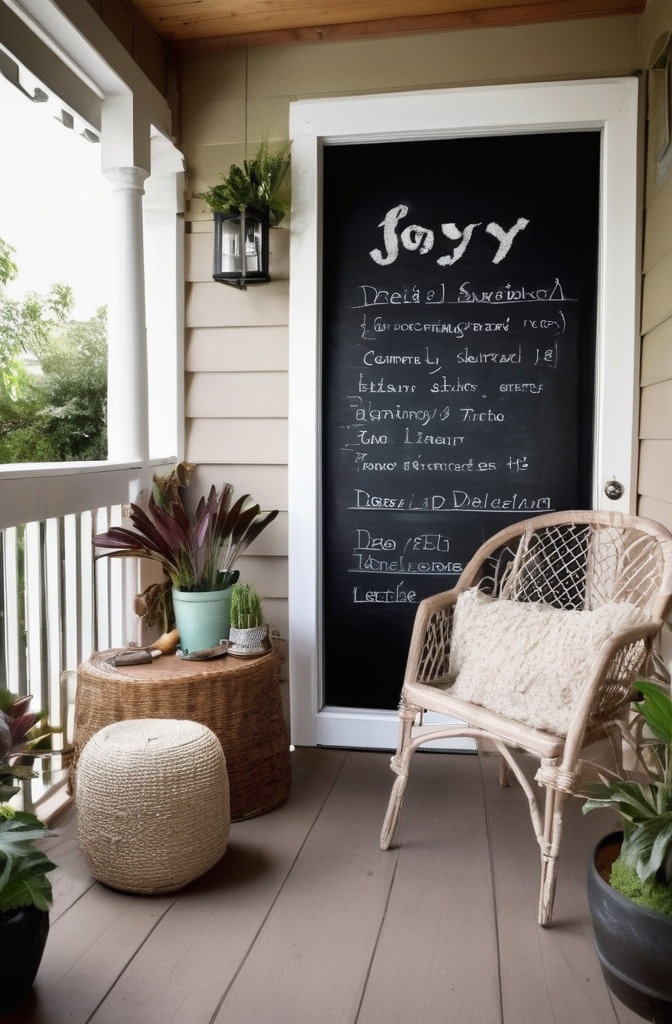
Collaborative approaches expand decorating possibilities while controlling costs. Community organizer Leila Washington shares, “Our neighborhood decoration exchange has transformed how we approach the holidays. Members bring underused items and leave with fresh inspirations, creating varied displays without additional spending.”
Community strategies include:
- Neighborhood decoration exchanges fostering variety
- Group purchases of equipment like tree delivery services or light installation
- Shared storage solutions reducing individual space requirements
- Cooperative crafting sessions pooling materials and expertise
These arrangements build community connections while expanding decorative possibilities.
X. Creating Holiday Traditions Through Decor
The most meaningful decorations connect directly to family experiences and values.
Meaningful Ornament Collections That Tell Your Family Story
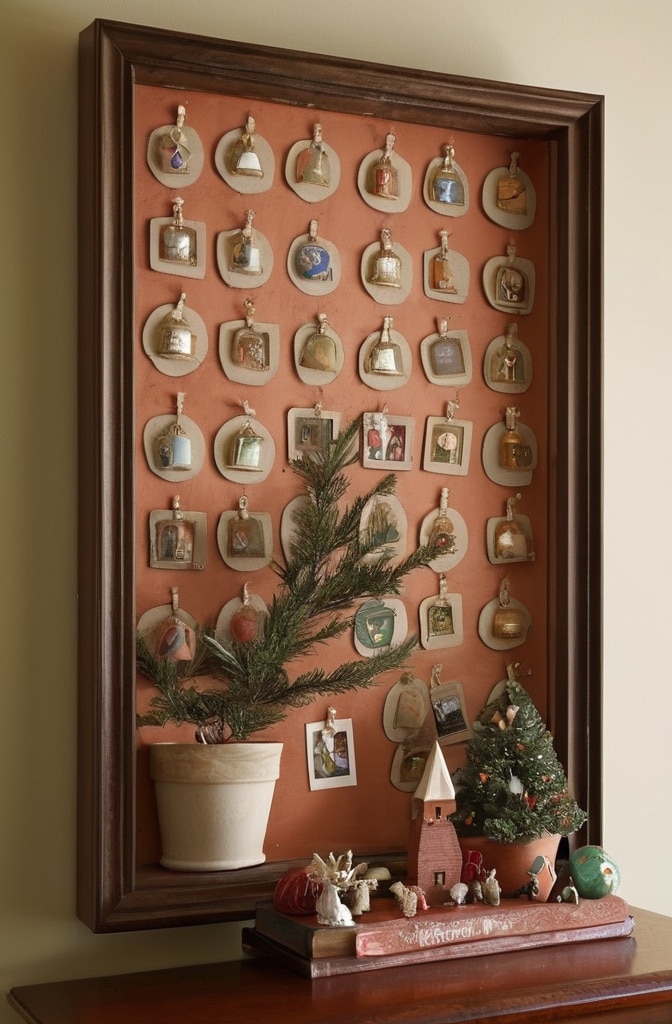
Beyond mere decoration, ornaments can document life journeys. Family therapist Dr. Rebecca Martinez observes, “Objects linked to experiences carry psychological power beyond their physical presence. When displayed annually, they reconnect us with important memories and relationships.”
Collection approaches include:
- Annual ornaments marking significant life events
- Travel souvenirs adapted as tree decorations
- Children’s creative works preserved and dated
- Inherited pieces connecting multiple generations
These collections transform trees into three-dimensional family albums.
Adaptable Decor Elements That Evolve with Changing Family Dynamics
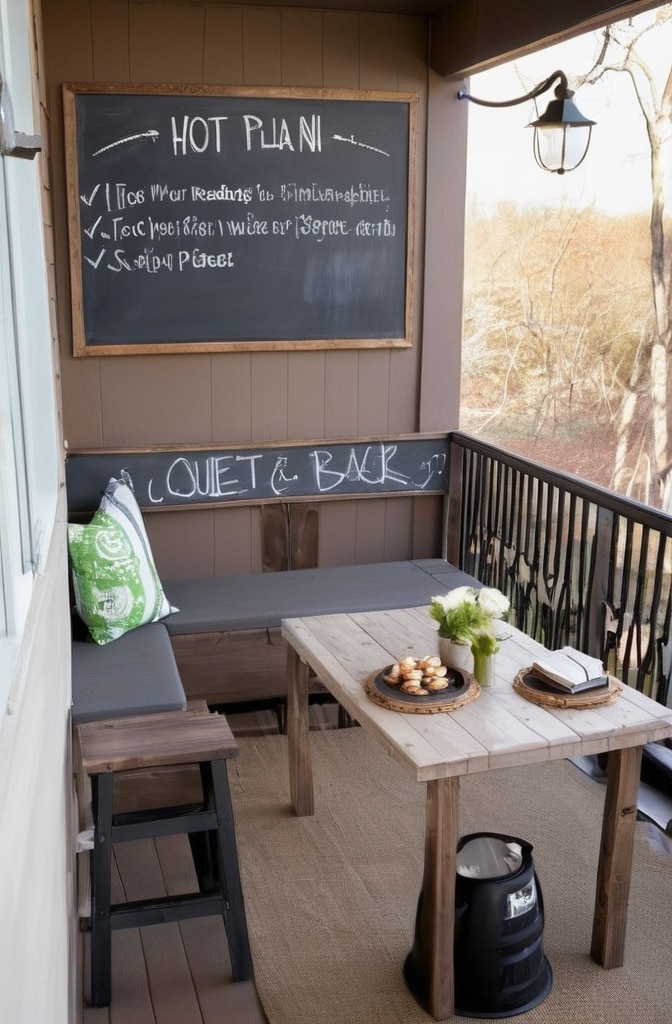
Family structures change over time, requiring decorative flexibility. Social psychologist Dr. Michael Chen notes, “Holiday decorations often serve as physical representations of family structure. Adaptable systems acknowledge changing relationships while honoring continuity.”
Flexible approaches include:
- Modular stocking displays accommodating additions and absences
- Photo displays easily updated with current family configurations
- Traditions that travel between changing households
- Digital elements incorporating distant family members
These adaptations honor both heritage and current reality.
Incorporating Cultural Heritage into Your Holiday Decorating Scheme
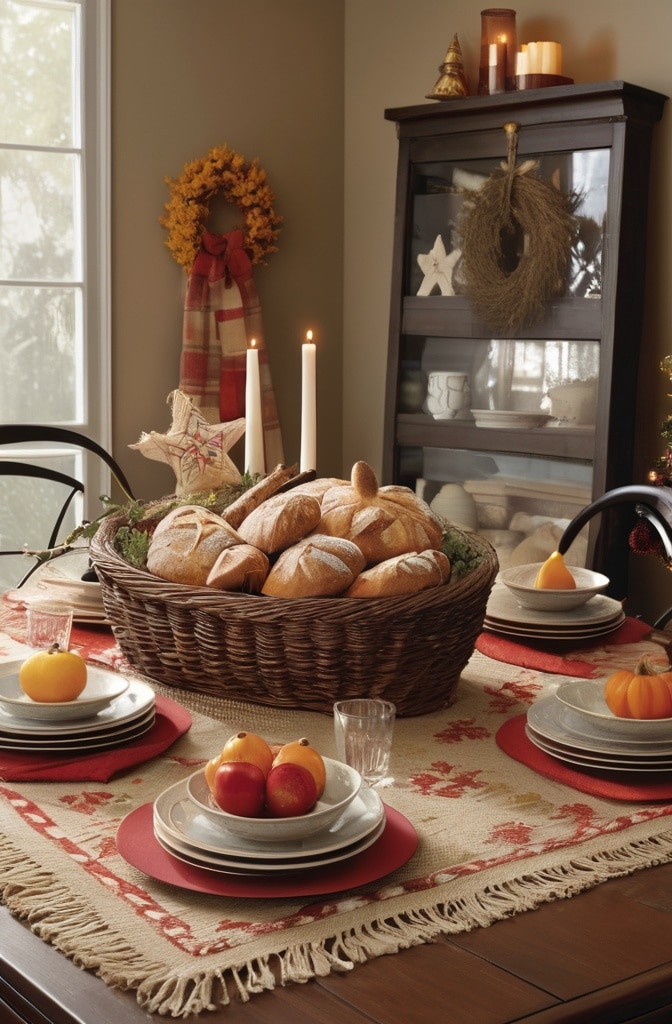
Multicultural families benefit from decorative elements honoring diverse traditions. Cultural historian Dr. Jamal Williams suggests, “Rather than diluting multiple traditions, look for thoughtful integration points. This creates distinctive decorating schemes with personal significance.”
Integration strategies include:
- Color schemes drawing from multiple cultural traditions
- Dedicated spaces honoring specific heritage elements
- Fusion decorations combining techniques from different backgrounds
- Rotating emphasis allowing different traditions prominence in successive years
These approaches enrich holiday experiences through meaningful diversity.
Creating Designated Spaces for Traditional Holiday Activities
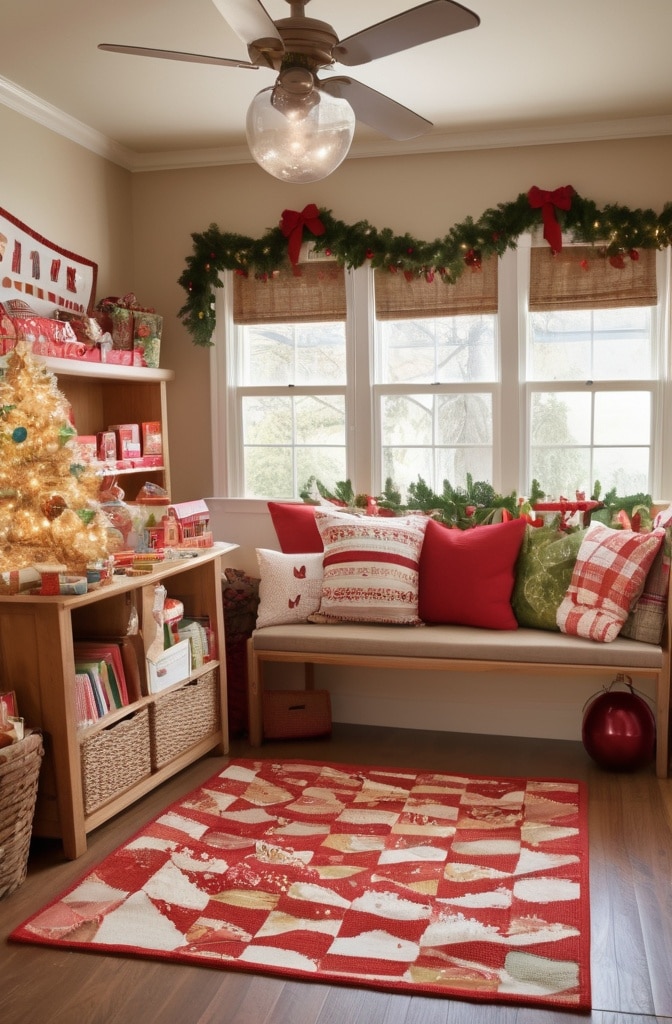
Intentional activity zones enhance family engagement. Child development specialist Emma Rodriguez recommends, “Create physical environments supporting valued activities—a cookie decorating station, a gift wrapping corner, or a holiday reading nook. These spaces invite participation without verbal prompting.”
Effective activity zones include:
- Game table with seasonal puzzles and activities
- Letter-writing station for Santa correspondence or holiday cards
- Hot chocolate bar with seasonal accompaniments
- Craft corner with materials for ongoing holiday projects
These spaces become memory-creation stations enhancing the season’s significance.
Conclusion
The most enduring holiday decorations transcend mere visual appeal—they create environments where meaningful experiences flourish. As designer Thomas Williams reflects, “When we decorate thoughtfully, we’re actually creating memory containers. The physical elements matter less than the experiences they facilitate.”
This holiday season, consider how your decorating choices might enhance connection, express authenticity, and create space for what matters most. Whether you embrace traditional elements with modern applications or forge entirely new aesthetic paths, successful holiday decorating ultimately serves the people experiencing it.
Start with one area that speaks to you—perhaps refreshing tree decorations with a new organizing principle, establishing an intentional activity zone, or exploring a color scheme that resonates with your existing environment. Small, intentional changes often create more impact than complete overhauls.
As you unwrap ornaments and arrange greenery this season, remember that the most beautiful holiday homes aren’t necessarily the most elaborately decorated—they’re the ones where the decorations authentically reflect the people who live there and the experiences they value most.
